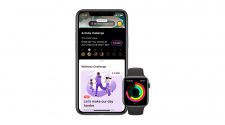Ordering food from a restaurant has changed dramatically over the past decade. Picking up the phone and talking to an actual human feels quaint, given that today’s consumers can place delivery and pickup orders through convenient third-party delivery apps, by text or even via their homes’ virtual assistants.
As alternative methods continue to emerge, operators must keep pace—or risk leaving money on the table. But they also must consider what consumers want, how much it will cost to give it to them and whether the investment will pay off in the long term.
According to Technomic’s 2018 Takeout & Off-Premise Consumer Trend Report, 60% of restaurant operators are receiving more takeout orders than they did in 2016, and 27% of consumers say they’re ordering carryout or delivery more often than they did in 2016. With numbers like these, it makes sense that operators would want to expand the number of ways consumers can order from them. But there’s a big technological disconnect between how consumers want to order and what operators are offering.
What consumers want vs. what they’re getting
An April 2019 collaborative study from the National Restaurant Association and Technomic found that 56% of consumers place their delivery orders via restaurant websites. Yet only 45% of restaurants—Panera Bread and Chili’s among them—actually offer online ordering through their websites. Similarly, 43% of consumers order via restaurant apps, but just 18% of restaurants (including Noodles and Co. and Starbucks) have built apps with mobile ordering functionality.
This disconnect signals that restaurants need to enable consumers to order food delivery across multiple channels. “’Omnichannel’ access is the catchphrase of the moment—just look at how many chains have expanded the ways consumers can place their off-premise orders,” explains Peter Romeo, who covers delivery as editor at large of Restaurant Business. “Delivery enables customers to have a meal whenever and wherever they want it.” Giving them multiple, easily accessible ways to initiate those orders can further increase sales, he adds.
Moving beyond standard options like apps and third-party providers such as Grubhub and Seamless also can help differentiate an operation. Consider virtual assistants such as Amazon’s Alexa, for example: Three in 10 consumers say they would order via virtual assistant if they could, but only 12% of operators (Domino’s, for example) currently make this possible.
The generational divide is important to note here, too, as younger consumers are more likely than older generations to use these technologies. For instance, Technomic’s 2018 Generational Consumer Trend Report found that more than half of Gen Z (54%) and millennial (59%) consumers would likely order online from a mobile device. Gen X (35%) and baby boomer (17%) consumers, meanwhile, are less likely to do so.
The same patterns emerge for restaurant mobile app usage. Forty-one percent of Gen Z and 41% of millennial consumers would order food through an app if they could; by comparison, just 25% of Gen X and 10% of baby boomer consumers would do so.
These findings suggest that technology-driven ordering flexibility can entice younger consumers to order out more often. Operators wanting to appeal to Gen Z and millennials especially should therefore consider implementing these technologies.
Next steps
By not enabling consumers to order from their favorite restaurants using the channels they most prefer, operators could be unintentionally derailing their delivery and off-premise sales.
To get the most out of mobile ordering, consider doing trial runs of different technologies to see what works well for staff and what consumers favor. It also can be helpful to survey diners at different locations to find out what they’d likely use. Then, invest in the methods that will best serve your business and the needs of your guests.
Find these and other insights in Course Correction: How Technology Is Reshaping Foodservice, a white paper from Clemens Food Group.
This post is sponsored by Clemens Food Group
















